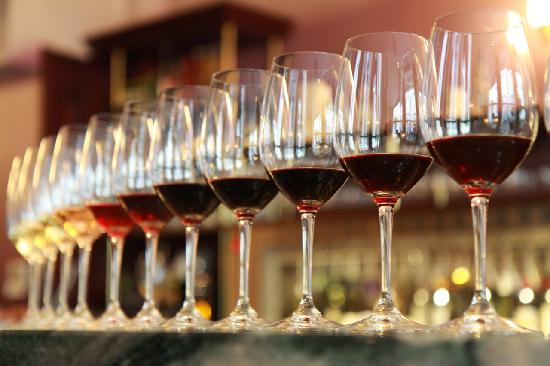Without a doubt the question I get the most in my wine classes is “How can I learn to taste wine like a pro?” The short answer to this question is practice. The long answer is that there is no short cut to being the best. Practice is the key to success in everything, from the wine glass to the bedroom and beyond. As any wine professional will tell you, they taste a lot of wine. The term ‘a lot’ is relative but imagine that there are some Masters of Wine, wine journalists, sommeliers, wine judges, and winemakers who will taste hundreds of wines per day. The trick to maintaining acuity from start to finish is in having an organized method of tasting (OMT). Wine pros apply this OMT to every wine, every time. We each have our own aroma and flavor memories that we bring to each wine, but at their most basic, all OMTs include a visual analysis of the wine, an olfactory review, a tasting, and a quality analysis.

Color can say a lot about a wine. First, and probably foremost, the color of the wine is an indicator of whether the wine comes from black (or red) grapes, or white (aka green) grapes. Sure we can see what color a wine is, but how do the pro’s assess color in wine? With a few ounces of wine in your glass, tilt the glass forward, away from you and over a white surface. Look at the wine from the outside edge through to the core (or the deeper part) of the wine.

White wines have a color spectrum that falls along the lines of water white (without any color) through brown and includes shades of green, yellow, and gold along with descriptors like lime, lemon, hay, and topaz. White wines with deep yellow, gold, or brown coloring can indicate that the wine is at or beyond the best condition for drinking. What color do you see? The visual cues are clues to the variety of grapes that were used to make the wine, but they can also indicate how the wine was made – including the way the grapes were treated, the fermentation methods (temperature-controlled tanks or barrels), and how long a wine was aged. For instance, a white wine with a pale yellow edge and core could indicate that the wine is young or youthful. A yellow or gold color could imply that the wine has aged in barrels at the winery, in the bottle, or both. Essentially all white wines will yellow and brown over time as oxygen acts interacts with the liquid. As wine tasters, what we are looking for is the first clue as to the potential condition of the wine as we move toward smelling it.


Red wines are more difficult to make quick visual judgments about, simply because there are more pigments trapped in the wine. Looking closely, with the wine glass tilted away from us, and observing the edge and the core of the wine, you may discover that the colors vary from pink to crimson to red or purple, or even opaque. These colors are indicators of the kinds of grapes used to make the wine – grapes with anthocyanin-rich skins make inkier wines – and how long the wine has been aged. Red wines with browning at the edge tend to suggest that a wine is approaching, at, or beyond its best condition for drinking. Aromas in wine tend to run the gamut and everyone’s personal experiences with aromas and flavors are different. The simplest way to put this is the fresher a wine smells – fruity, herby, oaky – the more enticing that wine’s flavors will probably be.
My previous article about aromas in wine is a good place to start. I will be writing about detecting wine aromas in Part Two of this series on professional wine tasting strategies. In the meantime, I look forward to your comments about the colors you find in the wines you are drinking.




Pingback: Start Your Own Wine Club … OR … A Wine Club You Can Love | Magazine4You
Pingback: How To Taste Wine Like a Pro – Part 2 | AMERICAN WINE WRITER
Pingback: How To Taste Wine Like A Pro: Part 2 | Magazine4You
Pingback: How To See Wine Like A Pro | AMERICAN WINE WRITER